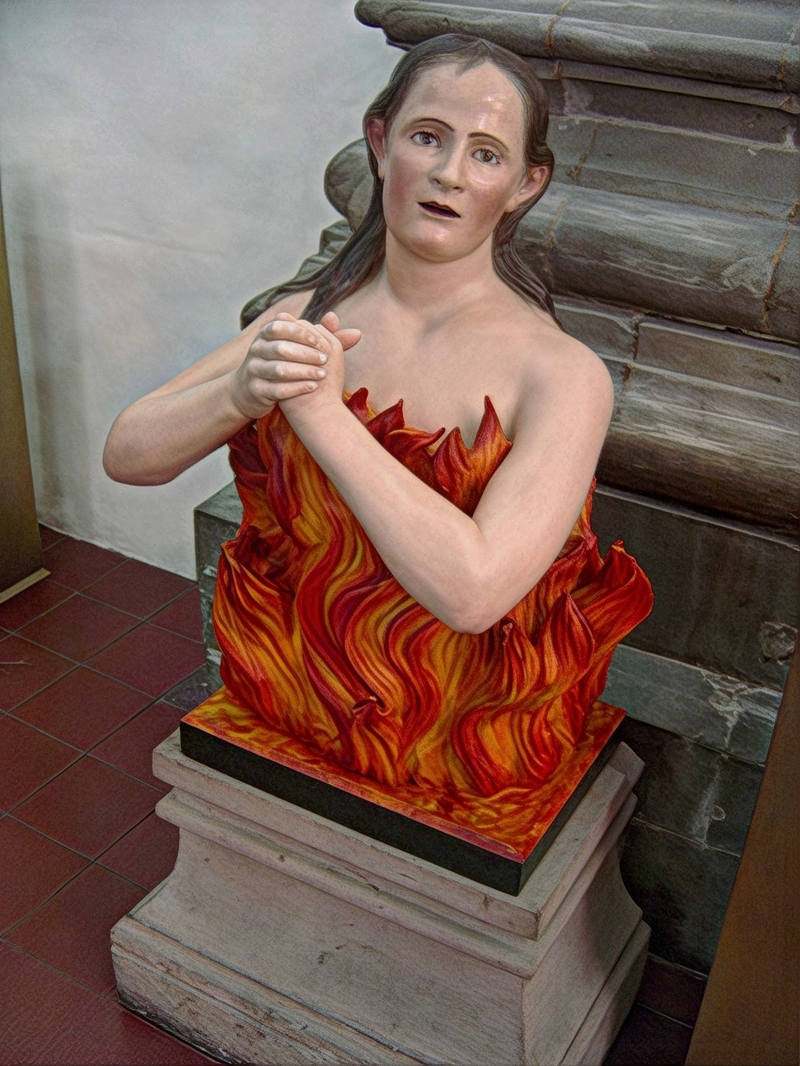
|
|
|
|||||||||
|
|
||||||||||
Anima Sola Wood on stone base, 18th century Church and Former Convent of San Agustín, Queretaro, Mexico |
||||||||||
| The Anima Sola (Lonely Soul) is a devotional image in Catholic tradition, often associated with the souls in Purgatory. It typically depicts a solitary figure, usually a woman, shackled in chains, surrounded by flames, and looking upwards in anguish or supplication. This imagery is symbolic, reflecting theological beliefs about Purgatory as a place of purification. The flames represent the cleansing fire that purifies the soul, while the chains signify bondage to sin, with their breaking symbolising the soul's eventual release as it moves towards salvation. Despite the anguish portrayed, the figure’s upward gaze or prayerful posture embodies hope and redemption, emphasising that Purgatory is temporary and that the soul is destined for union with God. Depictions of men in the context of the Anima Sola or souls in Purgatory are less frequent but are certainly present, especially in broader Catholic art. Male figures are typically shown in group compositions rather than as solitary individuals, symbolising the collective nature of humanity’s journey through purification. The Anima Sola serves as a reminder of mortality and the importance of living virtuously, inspiring prayers for the souls in Purgatory, as these prayers are believed to expedite their journey to Heaven. In some cultural contexts, particularly in folk Catholicism across Latin America and the Caribbean, it has taken on mystical or superstitious associations, being invoked for personal or occult purposes such as seeking justice or resolving conflicts, though such practices fall outside official Catholic doctrine. |
||||||||||









